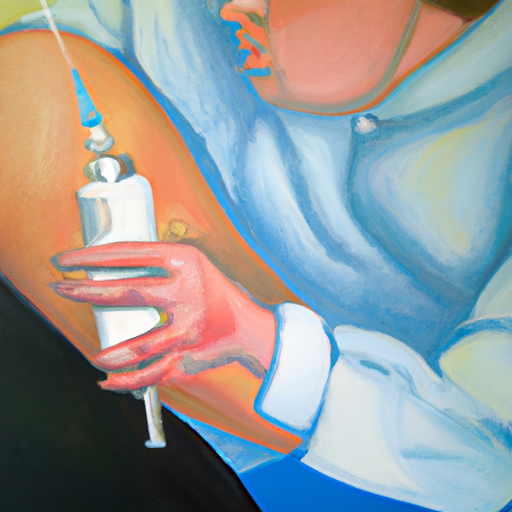Anaphylaxis, a severe and potentially life-threatening allergic reaction, can strike unexpectedly and with devastating consequences. It is crucial for individuals to have a comprehensive understanding of this condition, including its symptoms, causes, and diagnosis, in order to seek timely treatment and prevent fatal outcomes. In this article, we will delve into the world of anaphylaxis, exploring its various facets and shedding light on the life-saving treatment options available. Furthermore, we will provide practical tips for managing allergies and avoiding triggers, aiming to empower individuals to take control of their health and minimize the risk of anaphylaxis. So, let us embark on this enlightening journey to unravel the mysteries of anaphylaxis and equip ourselves with the knowledge needed to protect ourselves and our loved ones.
1. "Understanding Anaphylaxis: Symptoms, Causes, and Diagnosis"
Anaphylaxis is a severe and potentially life-threatening allergic reaction that requires immediate medical attention. It occurs when the immune system overreacts to a specific allergen, causing the release of chemicals that lead to a cascade of symptoms throughout the body. Understanding the symptoms, causes, and diagnosis of anaphylaxis is crucial in preventing and managing this serious condition.
The symptoms of anaphylaxis can vary widely from person to person and can affect multiple systems in the body. The most common symptoms include difficulty breathing, swelling of the lips, tongue, or throat, hives or rash, tightness or pain in the chest, dizziness or fainting, and gastrointestinal issues such as nausea, vomiting, or diarrhea. It is important to note that anaphylaxis can progress rapidly, and even a mild initial symptom can quickly escalate to a life-threatening situation. Therefore, prompt recognition and treatment are essential.
The causes of anaphylaxis can be diverse, but the most common triggers include foods (such as peanuts, tree nuts, shellfish, and eggs), insect stings (from bees, wasps, or hornets), medications (like antibiotics or nonsteroidal anti-inflammatory drugs), and latex. Allergies to these substances can develop at any age, even if previous exposures were well tolerated. Additionally, some individuals may experience anaphylaxis due to exercise or unknown causes, known as idiopathic anaphylaxis.
Diagnosing anaphylaxis is primarily based on a thorough medical history, physical examination, and the presence of typical symptoms. It is important to provide detailed information about the timing of exposure to the allergen, the sequence of symptoms, and any previous allergic reactions. Additional tests, such as blood tests to measure specific IgE antibodies or skin prick tests, may be performed to identify the specific allergen triggering the reaction. These tests can be valuable in confirming the cause of anaphylaxis and guiding future precautions and management.
Once anaphylaxis is suspected or diagnosed, immediate treatment is crucial to prevent a life-threatening situation. The primary treatment for anaphylaxis is epinephrine, which is administered through an auto-injector device. Epinephrine works rapidly to reverse the allergic
2. "Life-Saving Treatment Options for Anaphylaxis"
Life-Saving Treatment Options for Anaphylaxis
Anaphylaxis is a severe allergic reaction that can be life-threatening if not promptly treated. It is essential for individuals at risk of anaphylaxis, as well as their caregivers and healthcare providers, to be familiar with the life-saving treatment options available. Recognizing the signs and symptoms of anaphylaxis and knowing how to respond can make a crucial difference in saving lives.
The primary treatment for anaphylaxis is the administration of epinephrine, commonly known as adrenaline. Epinephrine acts quickly to counteract the allergic reaction and can reverse the symptoms within minutes. It works by narrowing blood vessels, relaxing smooth muscles in the airways, and reducing swelling, thus improving breathing and stabilizing blood pressure.
Epinephrine is typically administered through an auto-injector, a device designed for easy and quick use. It is essential for individuals at risk of anaphylaxis to carry their prescribed auto-injector with them at all times. This ensures that they can promptly administer the life-saving medication if an allergic reaction occurs.
Education on how to use an auto-injector is crucial. Individuals at risk of anaphylaxis, their family members, and close contacts should receive proper training from a healthcare professional. This training should include how to recognize the signs and symptoms of anaphylaxis, when to administer epinephrine, and how to use the auto-injector correctly.
After administering epinephrine, it is crucial to seek immediate medical care. Even if the symptoms improve after using the auto-injector, it is still necessary to be evaluated by a healthcare professional. Anaphylaxis can lead to a biphasic reaction, where symptoms reoccur hours after the initial episode. Therefore, ongoing medical monitoring is crucial to ensure appropriate treatment and prevent any complications.
Additional treatments for anaphylaxis may include antihistamines and corticosteroids. These medications can help to reduce inflammation and control allergic reactions. They are often administered in a healthcare setting, along with supportive measures such as oxygen therapy, intravenous fluids, and close monitoring of vital signs.
It is important to note that epinephrine is the first
3. "Preventing Anaphylaxis: Tips for Managing Allergies and Avoiding Triggers"
Anaphylaxis is a severe and potentially life-threatening allergic reaction that requires immediate medical attention. While it is crucial to know how to manage anaphylaxis in case of an emergency, taking preventive measures can significantly reduce the risk of an allergic reaction occurring in the first place. By understanding and avoiding triggers, individuals can effectively manage their allergies and minimize the chances of experiencing anaphylaxis.
1. Identify and avoid allergens:
The first step in preventing anaphylaxis is to identify the specific allergens that trigger an allergic reaction. This can be done through allergy testing conducted by a healthcare professional. Once identified, it is important to take proactive measures to avoid these allergens. For example, if you are allergic to peanuts, carefully read food labels, ask about ingredients when dining out, and inform friends, family, and coworkers about your allergy to avoid accidental exposure.
2. Create an emergency action plan:
Developing an emergency action plan with your healthcare provider is crucial, especially if you have a history of severe allergic reactions. This plan should include detailed instructions on what to do in case of an allergic reaction, including the use of epinephrine auto-injectors, such as EpiPens. Make sure your family members, close friends, and coworkers are aware of your action plan and know how to administer epinephrine if necessary.
3. Carry medication at all times:
If you have a known allergy that can potentially lead to anaphylaxis, it is essential to carry your prescribed medications with you at all times. This includes antihistamines, inhalers, and epinephrine auto-injectors. Having these medications readily available can help you respond quickly in case of an allergic reaction.
4. Educate those around you:
Educating others about your allergies and anaphylaxis is crucial for your safety. Make sure your friends, family members, and coworkers are aware of your allergies, the symptoms of anaphylaxis, and what to do in an emergency situation. By spreading awareness, you create a support network and increase the chances of receiving immediate assistance during an allergic reaction.
5. Be cautious of cross-contamination:
Cross-contamination can occur when allergens come into contact with non-all

